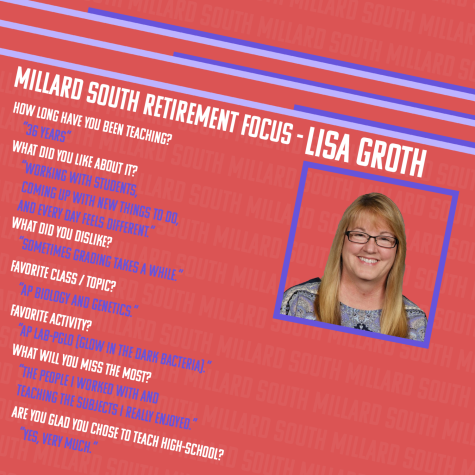Class rank: Competitive edge or setback?
Travis Cloyd’s senior contribution
There’s ongoing debate about whether class rank motivates students to work harder, or arbitrarily pits them against one another -Art by Lexie Smith
EMERGENCY ALERT! We have no student as #1 in class rank! Who will sit at the top of the pyramid? Who will represent the top of the class? Who will lead this year’s class into the future??? Wait — but do we need a #1?
Millard South removed class rank four years ago, a decision that follows the trend of high schools throughout the United States. Class rank has slowly been phased out, as every year more and more high schools decide to terminate its use. Class rank has been a mainstay of high school and higher education since its inception, though according to collegeboard.org, less than 50 percent of high schools currently use class rank. Despite this trend, every college application asks you for your class rank, a fact that has no doubt left many Millard South students questioning if they want class rank back.
Class rank is the act of ranking each class of students based on their grade point average (GPA). In this system, each student is given their own individual number i.e. 1,2,3,…, and so on. This number, or score, would be found on the student’s high school transcript and is considered a top factor in college admissions, as it is a strong representation of how the student is in comparison to their fellow students.
Emily Townsend, a counselor that has been at Millard South since 2006, explains, “Class rank was factored by the number of classes you took over your high school career. So if you took every opportunity to take a class, if you had no study hall, if you took classes over the summer, if you got A’s and all those, then you could move up on that class rank.”
To get an opinion from a student who would have liked to have a class rank, we asked senior Philip Reitmajer.
“I would love class rank, mostly to know where I stand,” Reitmajer said. “It’s not even if I think I’m at the top or
the bottom, I just want to know where I am and how to feel in school in comparison to my peers,” he said. “ I understand that it’s a very competitive thing and that it can have a draining effect on some students. But I feel like there’s a certain point where they need to accept that some people work hard and want to be rewarded for that fact.”
When asked if he would have worked harder if class rank did exist, Reitmajer said, “I already worked very hard, so no, but I think it would have been nice.”
Other seniors disagree.
“I personally think it is a stupid thing purely because you can be incredibly smart and do decent-to-average in
AP classes, whereas someone who is in normal classes all the way through doesn’t take an AP class and it makes their class rank higher than yours simply because they didn’t take as challenging classes as you,” senior Taylor Petersen said. When asked what she thinks the implementation of class rank would do, she said, “It would wreck some of the people who have tried really, really hard throughout their high school career and just could not get up that one three in AP World History sophomore year.” “It’s interesting to see what your class rank is just to see in the comparison, but I don’t think it’s something that we should ever share with the general public. I don’t think it’s something that should hold any merit whatsoever,” Petersen said.
When asked about class rank in Millard, Townsend said, “Millard has a lot of students that are high-achieving students. So we have a large population of students, and when you have so many students that are at the top of their class, they get ranked accordingly. And so you could have a kid that has a 4.0 average down there at the bottom might be in the hundreds, versus a small-town school in Nebraska, where their senior class might be 50 or less.” She continued on, mentioning how class rank could be twisted from its original intention, and at times was disruptive in school.
“Sometimes we would get students that would transfer over from different Millard high schools to play this class rank game where they would be at a lower class rank at their previous school, then they would come in and learn how to move up on that classroom scale.”
Another example of a way students could play the class rank game was incoming freshmen taking summer school to get ahead, making them uncatchable to anyone not doing the same thing. Because of this, Townsend said, “ It just got to be the wrong focus.” She attributed the end of class rank in Millard to this, as she said, “I think the district wanted to focus on students being the best that they can like reaching their potential and valuing all students’ efforts and, and success.” Although, she said, “It pushed kids, as some kids wanted to take as many classes as possible, because the more classes you took, the higher your class rank was.”
Ultimately the district decided to do away with it, as many others have as well. Townsend would put it perfectly, as she said, “you don’t really want a culture where you’re just competing. Instead, it should be more of collaboration, so everybody can succeed or work together.”
Like what you see here? Your donation will support the student journalists of Millard South High School. Your contribution will allow us to purchase cover most of our annual website hosting costs.

Travis Cloyd is a senior and first year newspaper staff member. He is involved in both music and athletics, being a member of the marching band, jazz band,...

Alexis Smith is a senior at Millard South High School, and this is her first year on the Common Sense Staff. Outside of school, she likes hanging out with...



